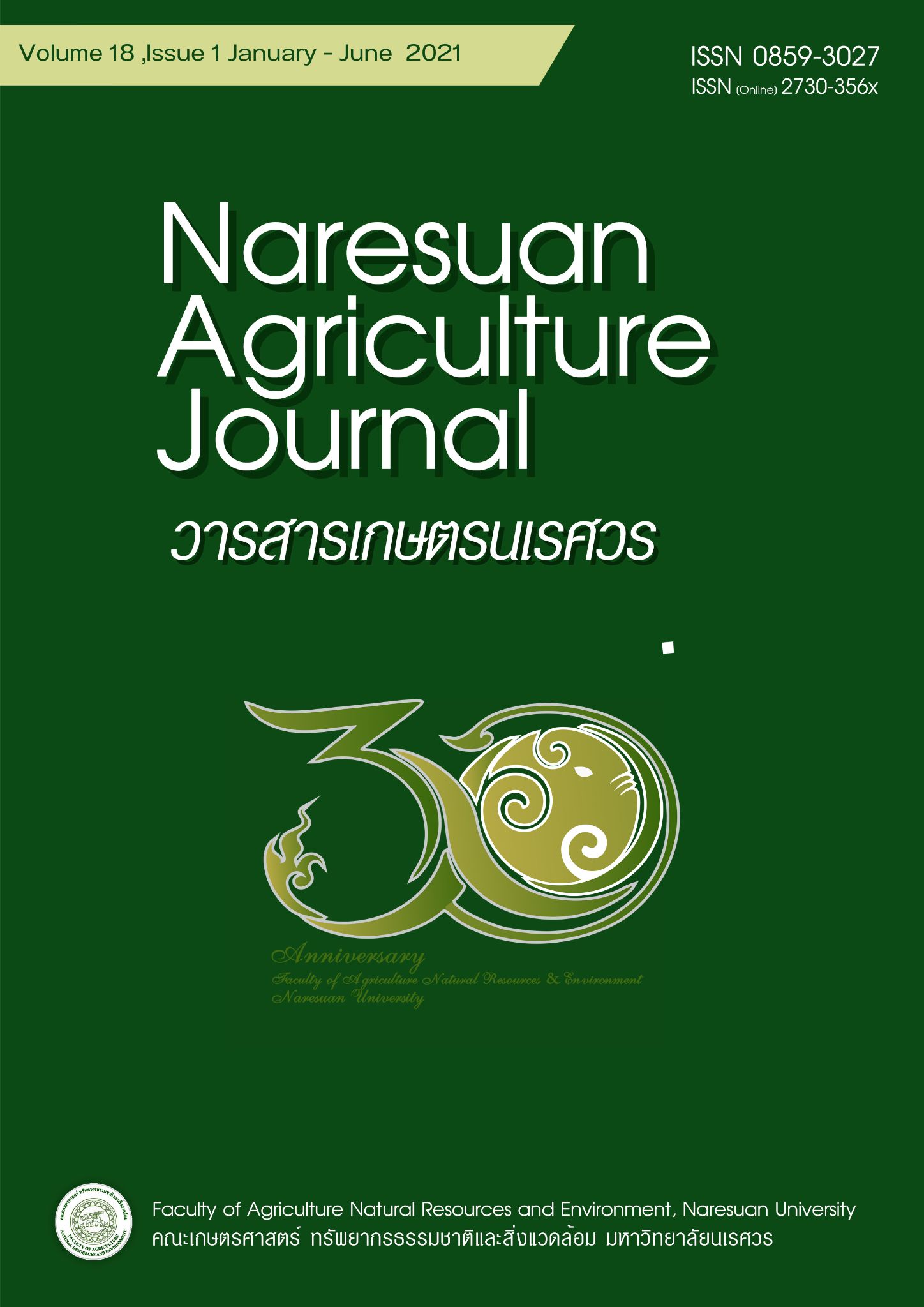Angkak Production in A Multi-Stage Fixed Bed Fermentation by Using Corn Cob as An Agriculture Residual Substrate
Main Article Content
บทคัดย่อ
Monascus pigment (Angkak) is a natural red colorant which is usually made by culturing Monascus spp. on cooked rice. Changing from rice to corncob is to utilize a residue from agricultural waste. In Thailand, corn is produced many tons a years to be feed in animal farms. This research’s objective is to improve a multi-stage fixed-bed fermenter for Monascus pigment production on corn cob. The period of solid state fermentation was three weeks and the experiment was divided in two parts. In the first part of experiment, corn cob was used as raw materials in a single fixed-bed fermenter with different height of column. The samples was taken and analyzed every week. The result was shown that the maximum pigment and glucosamine was produced at the third weeks. In the first week, the product yield was low and then increased clearly in the second and the third week. The 10 cm. height column was detected the pigments and glucosamine content higher than the 20 and 30 cm height. The metabolic heat of corn cob angkak in the 30 cm height column was higher than the 10 and 20 cm height column when it was monitored by using thermocouples and a datalogger. In the second experiment, the air flow rate was supplied to produce angkak in a three stages of 10 cm. height column vary from 0 to 8.6 L/min in each a fermenter (0, 1.5±0.2, 5.2±0.2, and 8.6±0.2 L/min). The results were showed that the moisture content was decreased when the rate of air flow increased and it affected to decrease the pigment and glucosamine production. The air supply was slightly affected to the different temperature in columns. Therefore, the maximum yield of pigment and glucosamine was shown in the unaerated multi-stage fixed bed fermenter.
Article Details

อนุญาตภายใต้เงื่อนไข Creative Commons Attribution-NonCommercial-NoDerivatives 4.0 International License.
Journal of TCI is licensed under a Creative Commons Attribution-NonCommercial-NoDerivatives 4.0 International (CC BY-NC-ND 4.0) licence, unless otherwise stated. Please read our Policies page for more information...


